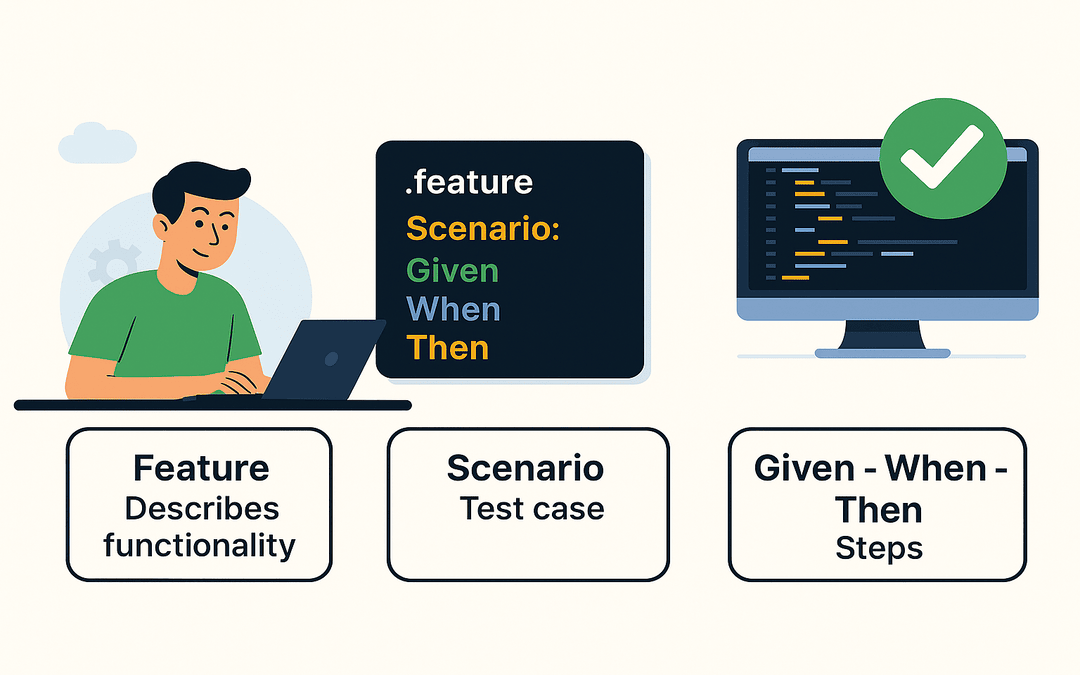Speaking a Common Language in Software Development
In the world of modern software development, clear communication between technical and non-technical team members is essential. Whether you’re building a new product or maintaining a mature platform, the ability for developers, testers, and business stakeholders to speak the same language can make or break your team’s efficiency. One of the most effective ways to achieve this is by writing automated tests using Gherkin syntax.
Gherkin is the cornerstone of Behavior-Driven Development (BDD)—a collaborative approach to software development that encourages shared understanding of requirements. With Gherkin, you write tests in plain language that describe how your application should behave from the user’s perspective.
🧠 What Is Gherkin Syntax?
Gherkin is a domain-specific language designed to describe software behavior in a human-readable format. It allows you to write test scenarios in plain English, using a simple structure of keywords that make your intent clear to both developers and business stakeholders.
The goal? Executable specifications-test cases that describe what your application should do from a user’s perspective.
🧩 Gherkin Basics: The Building Blocks
A typical Gherkin file (.feature) uses these main keywords:
- Feature – Describes what you’re testing.
- Scenario – A specific use case or behavior.
- Given – The initial context or setup.
- When – The event or action taken by the user.
- Then – The expected outcome or result.
- And/But – For additional steps
Here’s an example:
Feature: User Login
Scenario: Successful login with valid credentials
Given the user is on the login page
When the user enters a valid username and password
And clicks the login button
Then the user should be redirected to the dashboard
🛠️ Turning Gherkin into Automated Tests
Writing Gherkin scenarios is only the beginning. To make them executable, you’ll need to connect each step to actual code—called step definitions—using a BDD framework such as:
- Cucumber (Java, JavaScript, Ruby, etc.)
- Behave (Python)
- SpecFlow (.NET)
- Playwright-BDD or Cypress-Cucumber (JavaScript/TypeScript)
Each Gherkin step is linked to a function that performs the actual actions in your application.
Example of a step definition in Java:
@Given(“the user is on the login page”)
public void navigateToLoginPage() {
driver.get(“https://example.com/login”);
}
@When(“the user enters a valid username and password”)
public void enterCredentials() {
loginPage.enterUsername(“user”);
loginPage.enterPassword(“pass”);
}
🌟 Best Practices for Writing Gherkin Tests
- Keep it business-readable. Your scenarios should make sense to someone outside the engineering team.
- One scenario, one behavior. Focus each scenario on a single path or outcome.
- Avoid implementation details. Don’t mention UI elements unless they’re core to behavior.
- Re-use step definitions. Stick to a shared vocabulary for consistency and maintainability.
- Ensure your tests are reliable. Flaky tests can cause confusion and reduce trust in the test suite.
🚀 Final Thoughts
Gherkin syntax offers a powerful yet simple way to describe application behavior in plain language. It’s the glue that connects technical implementation with business requirements, enabling truly behavior-driven development.
Whether you’re just starting with test automation or looking to improve communication across your teams, adopting Gherkin can lead to clearer tests, fewer bugs, and a more collaborative workflow.
Start by writing your next test like a conversation—not just a script. That’s the Gherkin way.
Author: Márk Horváth Kávai





